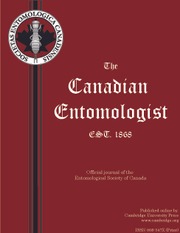Crossref Citations
This article has been cited by the following publications. This list is generated based on data provided by Crossref.
Hicks, Barry J.
and
Gordon, Roger
1992.
EFFECTS OF THE JUVENILE HORMONE ANALOG FENOXYCARB ON VARIOUS DEVELOPMENTAL STAGES OF THE EASTERN SPRUCE BUDWORM, CHORISTONEURA FUMIFERANA (CLEMENS) (LEPIDOPTERA: TORTRICIDAE).
The Canadian Entomologist,
Vol. 124,
Issue. 1,
p.
117.
Mulye, Hemendra
and
Gordon, Roger
1993.
Effects of fenoxycarb, a juvenile hormone analogue, on lipid metabolism of the eastern spruce budworm, Choristoneura fumiferana.
Journal of Insect Physiology,
Vol. 39,
Issue. 9,
p.
721.
Gordon, Roger
1995.
TOXIC EFFECTS OF A COMMERCIAL FORMULATION OF FENOXYCARB AGAINST ADULT AND EGG STAGES OF THE EASTERN SPRUCE BUDWORM, CHORISTONEURA FUMIFERANA (CLEMENS) (LEPIDOPTERA: TORTRICIDAE).
The Canadian Entomologist,
Vol. 127,
Issue. 1,
p.
1.


